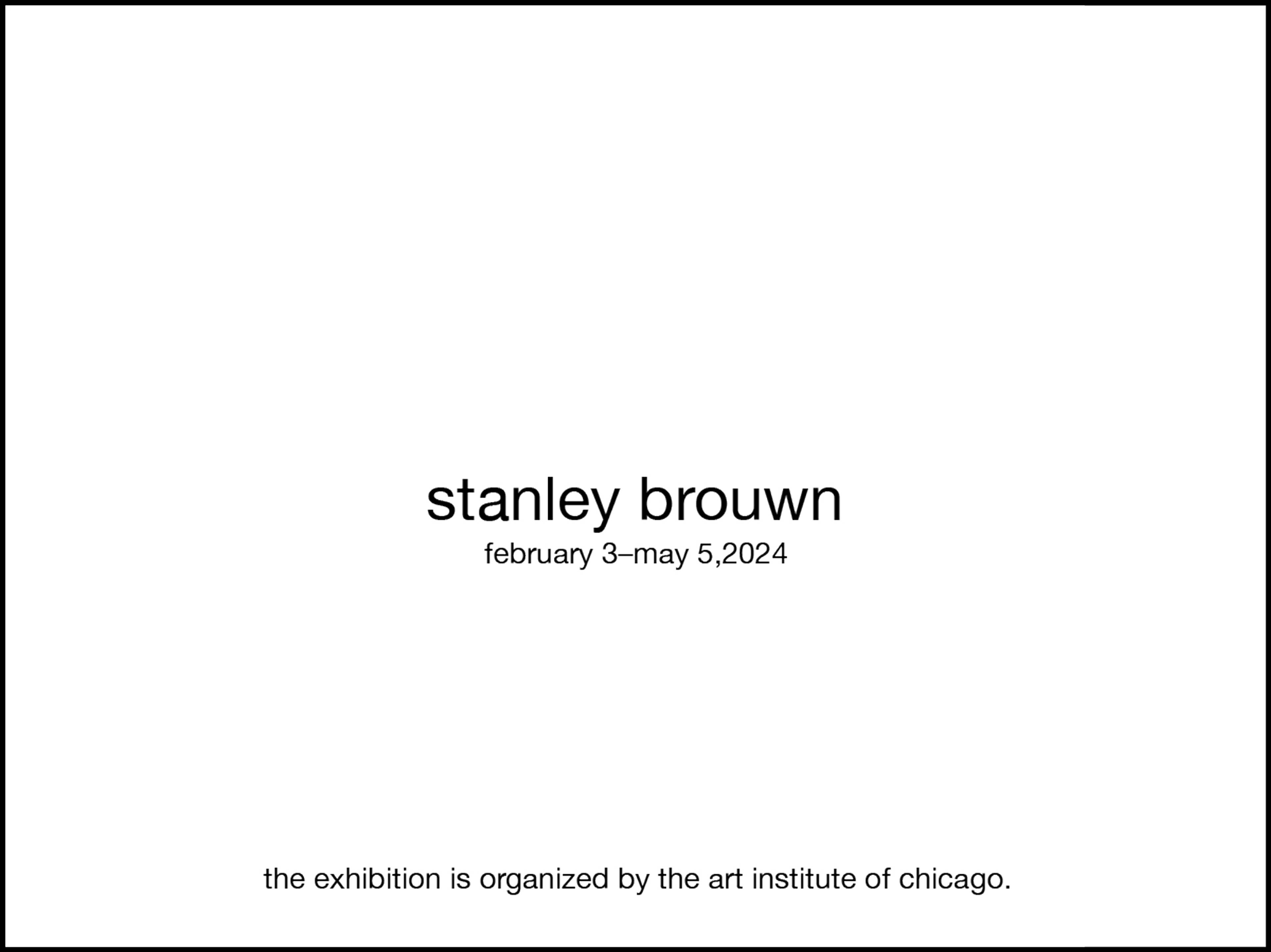A museum attendant warned each entering visitor in an earnest, urgent whisper that, in this gallery, photography is prohibited. Her repeating plea came to seem like the soundtrack. I think we all felt sympathy for her – that’s a wretched job – but it was also funny because, what, exactly, were they going to take pictures of? The gallery is almost comically austere, mostly white, with a little gray, and appointed with some rather un-photogenic works of art: sheets of paper with faintly drawn lines; other, smaller papers with typed phrases or numbers; a few strips of metal; books, spartanly printed, displayed under glass. Not allowing his work to be photographed was Brouwn’s thing. That, and prohibitions on supplying biographical details, pictures of the artist, or explanations of his work. A terse paragraph of wall text said as much and little else. No mention of life dates (1935–2017), or that he was born and raised in Suriname and moved to Amsterdam in 1957. Nothing about his early affiliations with Fluxus and the ZERO group, nor his participation in foundational exhibitions of Conceptual art (“Prospect 69” (1969), MoMA’s “Information” (1970) show, Lucy Lippard’s “2,972,453” (1971), or Documenta 5 (1972), organized by Harald Szeemann), let alone the broad commentary on decoloniality and diaspora that a biography like Brouwn’s would typically occasion.
Brouwn’s strictures around his work are easily recognized for a depersonalizing tendency common to a lot of art of the 1960s and 70s. But, if his intent was to occlude the figure of the artist, in practice, I found it had a different, at times opposite, effect. It’s not that exhibitionary conventions were simply absent, but that their absence was seen and felt everywhere. The absence was a kind of medium by which Brouwn directed how people moved, looked, and spoke. It gave a script to usually silent museum workers. It disoriented viewers, who, without context, struggled to puzzle out the artist’s work (rarely self-explanatory, occasionally hermetic), or else drifted, directionless, through the space until they glimpsed Gustave Moreau’s Salomé Dancing before Herod (1874–76) in an adjacent gallery and took off. We were participants in a kind of theater of refusal, Brouwn playing the ghost.
Within the work, too, Brouwn exerts a spectral, strangely auratic presence, owing partly to the frequent recurrence of his name. In a work from 2014, a slip of paper inside a little paper box reads, “at this moment the distance between stanley brouwn and yourself is x feet,” a statement of fact and intimation of wonder. In this way brouwn (1960–64), his best-known project, he asked strangers on the street for directions, had them draw him a map, and then stamped the paper with the titular phrase and signed it. As in a lot of his work, here, Brouwn is both author and (elusive) subject. The signature – he was often signing and initialing things – is an artist’s, of course, but also a bureaucrat’s. One does through acts of will, the other records what has been done. This mirrors the two often-intersecting subjects that occupied Brouwn for his entire career: walking and measure of distance – the individual moving through space, and the calculation of space.
He logged steps, wrote equations, made diagrams of ratios, and compared unlike units of measurement. A simple work, portrait of a week, lists the number of steps taken by Brouwn over seven days in October 2005. Sometimes, a sense of irony infuses the quantitative schema. A piece from 1973 comprises a sequence index cards that record the number of steps Brouwn walked in different cities in successive years. 1971 is Oslo; 72, Addis Ababa; 73, Tokyo; and so on. The final few, after Moscow in 1985, are blank, leaving things open-ended. Except things never really got started: The only card on which Brouwn put down a number of steps – and the only one he signed – was the first, Oslo. The number of steps is zero.
In a drawing from 1977, four vertical lines measure four lengths: a meter, one of Brouwn’s steps, an ell (an antiquated unit for measuring cloth), and a foot. Again, it is a simple procedure, and like many of his works, it juxtaposes the personal and the standardized, as well as standards across time and space. That systems of measurement – and space itself – are historically contingent, socially constructed, is maybe not a rev-elation. Brouwn, however, wasn’t exactly trying to reveal anything, at least as far I could tell. His work instead succeeds in the interstices of the computable and the arbitrary.
A final example, perhaps a bit fanciful. Sitting next to a length of metal, a piece of paper states: “a distance of 312 feet and an imaginary distance of 587 feet intersect each other in such a way that the intersection divides each distance into two equal distances on sunday 16 december 2007 at 17:07 in south america.” It’s funny that only one of the distances is imaginary, as is the contrast between the extreme specificity of the time and the generality of location. South America? That’s where Stanley Brouwn was from.
___
stanley brouwn
Hammer Museum, Los Angeles
3 Feb – 5 May 2024


